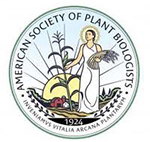Lab News
Our latest work on the function of photobodies is posted on bioRxiv. Congratulations Jean Ae, De, Jiangman, Keunhwa, and Juan!
Our manuscript "Photobodies enable the phase-separation and counterbalance of opposing phytochrome B actions in PIF5 degradation and stabilization" is now online. This work reveals that phytochrome B condensation enables the co-occurrence and competition of two antagonistic phase-separated signaling actions. Link to the paper: https://doi.org/10.1101/2023.11.12.566724 Abstract: Photoactivation of the plant photoreceptor and thermosensor phytochrome B (PHYB) triggers its condensation into subnuclear photobodies (PBs). However, the function of PBs remains frustratingly elusive. Here, we show that PHYB condensation enables the co-occurrence and competition of two antagonistic phase-separated signaling actions. We found that PHYB recruits PHYTOCHROME-INTERACTING FACTOR5 (PIF5) to PBs and, surprisingly, that PHYB exerts opposing roles in degrading and stabilizing PIF5. Perturbing PB size by overproducing PHYB provoked a biphasic PIF5 response: while a moderate increase in PHYB enhanced PIF5 degradation, further elevating the PHYB level stabilized PIF5 by retaining more of it in enlarged PBs. Our results support a model in which [...]




